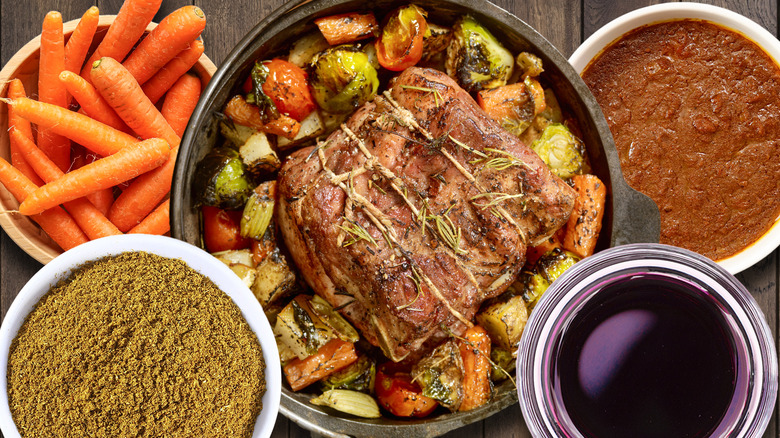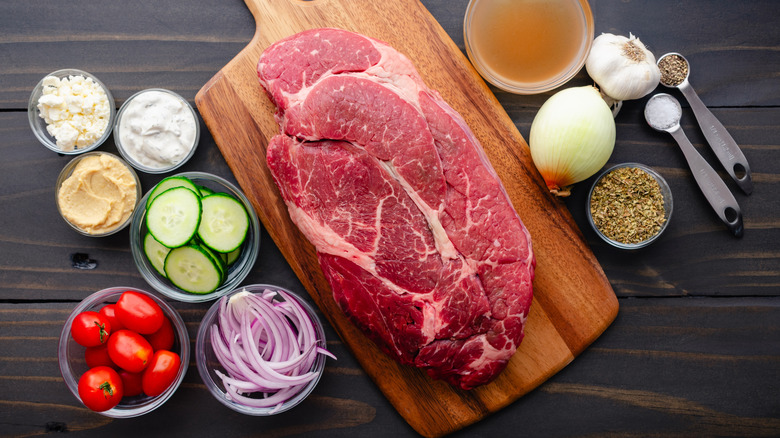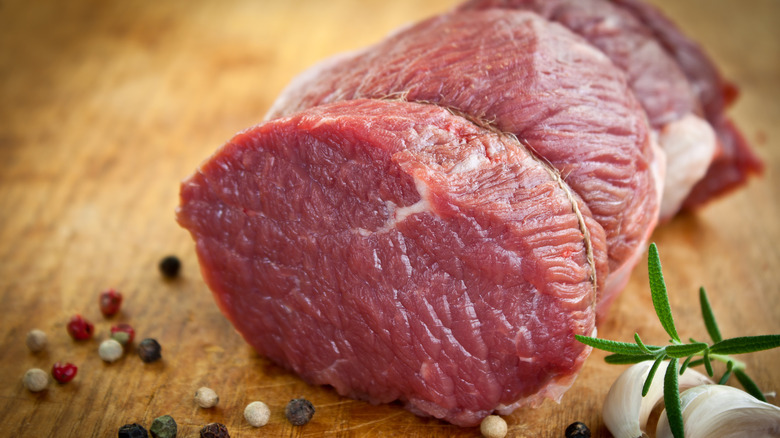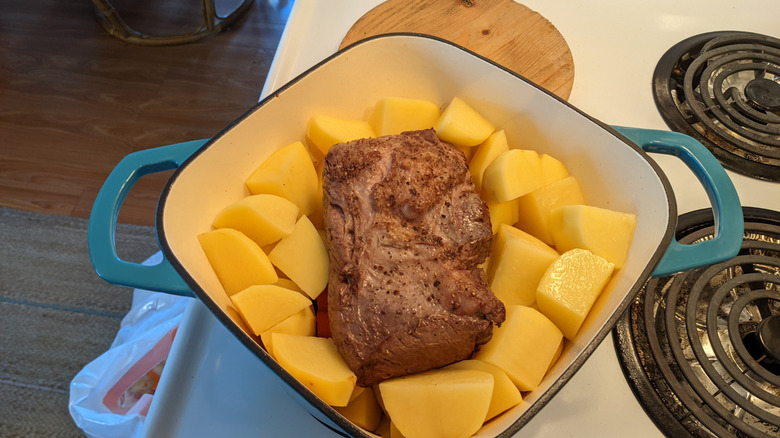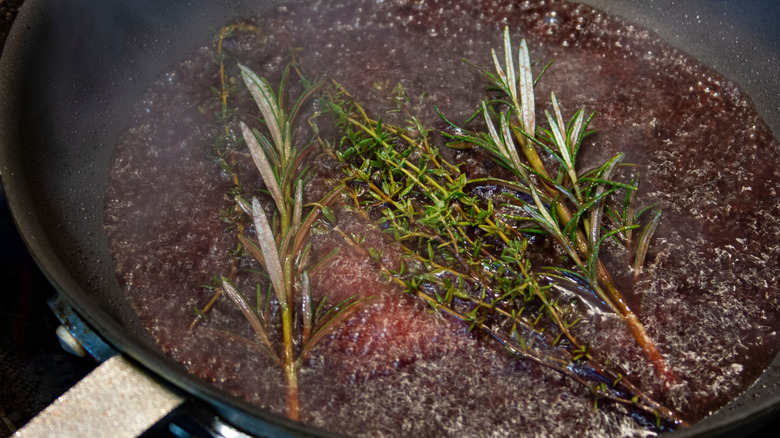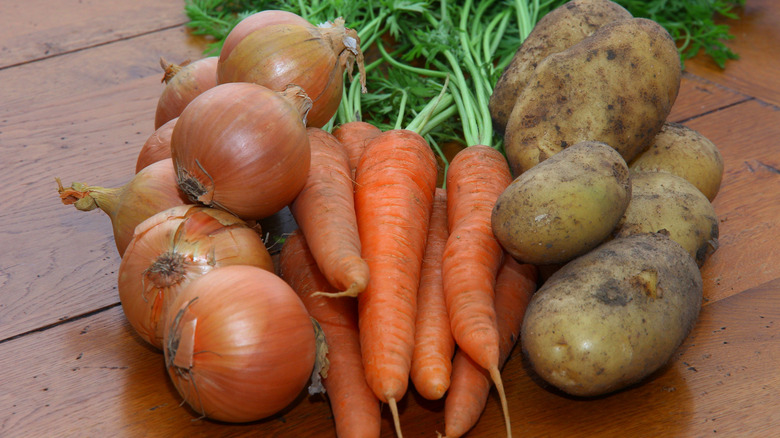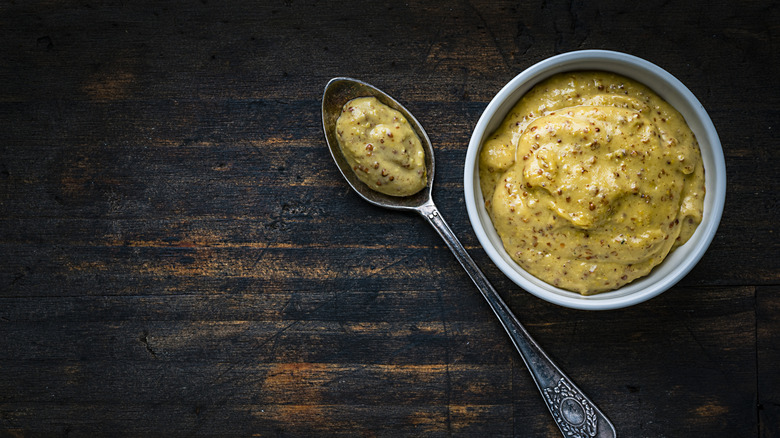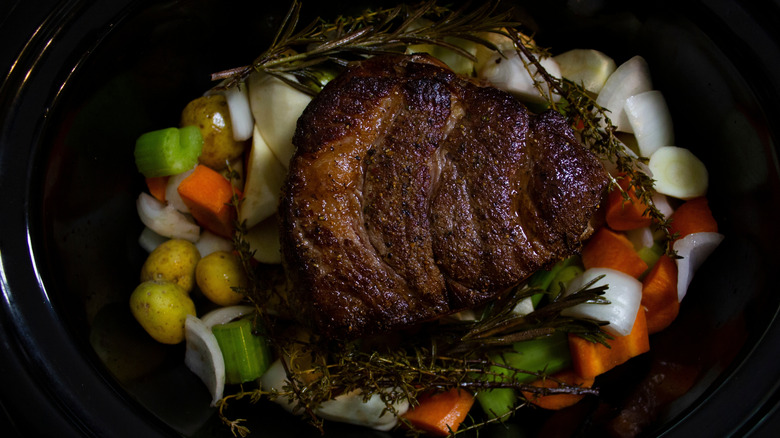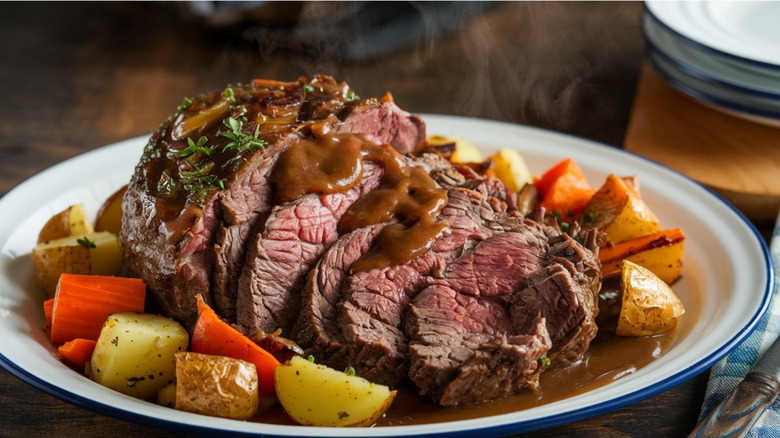9 Tips You Need When Cooking Pot Roast
Pot roast is a classic comfort dish made by transforming the simplest ingredients into a hearty dish versatile enough to serve at both cozy family dinners and special occasions. Whether you're mixing it up with an herb and fig variation or prefer a German-style pot roast, fork tender beef braised in a rich, vegetable-laden sauce is the perfect dish for chilly, winter nights or any time you want to enjoy comfort in a bowl.
Though it may sound a lot like beef stew, there is a key difference between the two. Beef stew is made with bite-sized pieces of meat, but with pot roast, the meat is left whole.
I've prepared pot roast countless times for personal chef clients, and it's one of my favorite recipes to teach students because it relies on essential, foundational cooking techniques like searing, deglazing, and braising. While the ingredients are simple -– beef, veggies and a flavorful braising liquid — getting pot roast just right requires a little culinary know-how. Without the right techniques, you can end up with dry meat, bland flavors, or improperly cooked vegetables. These are the tips you need to prepare pot roast perfectly every time.
Choose the right cut of meat
A successful pot roast starts in the grocery store. All beef roasts are not created equally, and knowing which one is the best to pick up from your local market can make or break your dish. Unlike beef cuts like tenderloin and filet mignon that are naturally tender, pot roasts start with tougher cuts of beef that become tender when cooked properly. This is good news for your wallet, as these tougher cuts are typically cheaper than their leaner counterparts.
For pot roast, you want a cut of meat that is well-marbled. Marbling is the white streaks of fat that run through red meat. This fat on your steak is more important than you realize, as the amount of marbling determines how tender and juicy your meat will be. You should also choose a roast with a lot of connective tissue. The connective tissue melts when the beef is cooked, turning from collagen to gelatin, which is what gives the meat the fork-tender consistency we expect from pot roast. The best cuts of meat for pot roast are chuck roast, beef brisket or a round roast. They have a perfect blend of marbling and connective tissue and the long, slow braising process transforms them into the melt-in-your-mouth roasts we love.
Be adventurous with your pot roast seasonings
Pot roast may be a traditional dish, but you don't have to limit your seasoning options to the same old herbs and spices when you're making it at home. Salt, pepper, and dried herbs like rosemary and thyme are the essential seasonings you need for a classic pot roast. However, if you're looking to elevate your roast into something extraordinary, step away from the tried and true herbs and spices and incorporate some new, less common options into the mix. If you're not afraid to experiment with spice blends and herbs, you can tailor your roast to suit your personal taste and explore flavors from around the globe. Let your spice rack serve as a passport for your palate.
Sticking with the same pot roast recipe is one of the biggest mistakes everyone makes with pot roast. There are a myriad of herbs and spices that can add infinite flavor to your finished dish. You can start a new and improved pot roast tradition with baby steps as simple as adding paprika to the spices you season your roast with. Both paprika and smoked paprika are made from dried ground peppers and will add a mild depth of flavor to your roast. The smoked variety will produce a much more pronounced flavor that is a delicious complement to the beef. Play with spices like cardamom, cumin, clove, and allspice to transform your next pot roast into the flavorful centerpiece of your next meal.
Hands off for the best sear
Searing or browning the meat is one of the first steps in the process of making a pot roast. Whether you're braising the roast on the stovetop, in the oven, or in a slow cooker, a good sear is what you need to create a beautifully browned crust on the roast. It develops more flavor in the meat, and it's during the searing process that those flavorful, browned bits of meat and seasoning develop on the bottom of your pan. These bits, called fond, add an abundance of flavor to your sauce when the pan is deglazed.
Whether you pan-sear a steak or a pot roast, the key is starting with a hot pan and a thin coating of oil. A common mistake I've witnessed scores of cooks make in cooking classes is constantly flipping or moving the meat once it's in the pan. The goal is to brown the meat evenly on all sides, but in order to achieve the desired result, you need to get in the habit of leaving the meat alone when it hits the pan. Every time you move the roast, you're interrupting the browning process. You'll end up with meat that's gray instead of brown and without the flavorful crust. Get in the habit of letting the meat rest in the pan, without moving it for a few minutes so the hot pan and oil can do their thing and brown the meat evenly.
Use an acid to deglaze your pot roast
Deglazing the pan is a crucial step in building a savory sauce for your pot roast. It's a simple process that can have a huge impact on the taste of your finished dish. In its simplest form, deglazing involves pouring a liquid into your pan to both start building your sauce and to loosen the bits of fond on the bottom of the pan. It's a foolproof way to capture all the flavor that develops on the bottom of the pan after searing the meat, and fold it into your sauce.
While broth, stock, or water are common choices for deglazing a pan, using only broth is a big deglazing mistake when cooking pot roast. When you're ready to deglaze, grab an acid like wine, vinegar, or citrus juice to level up your sauce even more. Using an acid is the best way to deglaze a pot roast. It can enhance the flavors already present in your roast, adding a brightness and balancing the richness of the meat. Wine will give your pot roast the perfect blend of acidity and a subtle sweetness. Citrus juice can have the same effect. It enhances the flavor without the alcohol. Consider other acidic liquids as well. You might be surprised to learn you can even deglaze pans with Coke and vinegar. All of these will give your pot roast a wonderfully layered flavor.
Choose the right vegetables for your pot roast
The meat may be the main attraction in a pot roast, but the vegetables are a key component of the dish's overall appeal. The delectable combination of the fork tender meat and vegetables that soak up the rich flavors of the sauce and seasonings makes pot roast the ultimate one-pot meal. To select the best vegetables to add to your pot roast, you have to consider how well they will stand up to a prolonged cooking time in a liquid. While delicate veggies like zucchini or spinach might be among your favorites, they're not the best choice to add to a pot roast. By the time your meat is cooked properly, these vegetables will have cooked to the point of mushiness.
Fortunately, there are plenty of other vegetables you should be cooking with pot roast, and root vegetables are a great place to start. The term root vegetable refers to vegetables that are grown underground, like carrots and onions, which are commonly found in pot roast recipes. You should also consider others like rutabaga, parsnips, and turnips. Each will add their own nuanced flavor to your roast. Whichever vegetables you choose, chop them evenly so they'll cook in the same amount of time, and resist the temptation to add them all to your roast at once. Instead, think about each vegetable's cooking time and add those that take the longest first.
Choose the best braising liquid and get the amount just right
The braising liquid you choose for your pot roast plays a vital role in cooking and flavoring the meat and vegetables. Braising involves cooking meat slowly in a flavorful liquid, and it's important to choose the right liquid and get the amount just right. The goal is to maintain moisture in your pot so that the liquid can help tenderize the roast as it cooks. While you technically could braise your pot roast in water, you'd miss the flavor that comes along with other liquids.
Broth and wine are two common braising liquids that are perfect for pot roast, but you should also consider braising your pot roast in beer. If you stick with wine, be sure to choose one you enjoy the flavor of because it will intensify as it cooks. Varieties like Côtes-du-Rhône and Malbec are excellent choices. They can impart their big, bold flavors to both the meat and the vegetables. A darker beer is the better choice for your pot roast. One big difference between light and dark beer is that dark beer, like red wine, has a deep, bold flavor. Whether you're braising in wine, beer, or broth, pay close attention to the amount of braising liquid you add. Avoid submerging the roast in the braising liquid. It should come no more than one-third to halfway up the sides of the meat.
Think outside your spice rack for flavor
You don't have to rely solely on herbs and spices to add flavor to your pot roast. If you think outside your spice rack, you'll discover a host of other tasty options in your pantry and your fridge to give your pot roast the most flavor. These unexpected ingredients will make sure your pot roast is anything but ordinary. You can easily improve the flavor of your pot roast with one dried ingredient — figs. Beef, broth and wines can be rich and dried figs offer a delicious sweetness to counter that richness. You can blend a few dried figs together with the sauce once your pot roast is cooked to enjoy more of the figs' flavor. Another uncommon ingredient to upgrade your pot roast is Dijon mustard. Its natural tangy sharpness is another way to easily cut the fat and balance the flavors in your pot roast.
You'll find the secret ingredient that will change your pot roast forever in your cookie jar, ginger snaps. Add them to your pot roast's sauce, and you'll be pleasantly surprised at how well the spices typically found in the cookies marry with the other flavors in your pot roast.
Use your slow cooker
A sturdy Dutch oven or heavy-bottomed pot is what likely comes to mind when you think of preparing a pot roast, and one or the other is typically what most pot roast recipes call for. If you are looking for a hands-off approach to a perfect pot roast, turn on your slow cooker. Learning how to use a slow cooker to make pot roast can be a game-changer for creating a fantastic meal with minimal effort. The consistent, low heat of the slow cooker is perfect for breaking down tougher cuts of meat, like those used for pot roast.
For best results, it pays to sear your roast before putting it in a slow cooker. You can load your vegetables, seasonings, and any other ingredients into the slow cooker while your roast sears. Once it's evenly browned on all sides, tuck it into the center of the slow cooker and cook it until it's fork tender. Most recipes recommend cooking a roast for four to six hours on high or eight to ten hours on low.
Don't forget to thicken the sauce
You might think your work is done once your pot roast and vegetables are fully cooked, but there's one last step you need to take to seal the flavor deal with your roast. Once you've taken your pot roast out of the oven or the slow cooker timer signals that your cooking time is up, take a few extra minutes and thicken the sauce. Thickening the sauce will turn the braising liquid into a rich, velvety gravy that is the most delicious finishing touch to your meal. The sauce will be delicious as is, but a thickened sauce is better able to cling to the meat and vegetables to deliver maximum flavor with each bite.
There are a few ways to tackle this task. You can take advantage of the ingredients in your roast that are natural thickeners. Celebrity chef Ina Garten uses canned tomatoes to thicken pot roast. The liquid in the tomatoes evaporates away while the roast cooks, and the remaining tomatoes are puréed with the sauce once the roast is done. In culinary school, I learned to lightly dredge my roast in flour before searing it. This helps create a more significant crust on the roast, and the flour thickens the sauce as it cooks. Alternatively, you can reduce your sauce on the stovetop by cooking it, uncovered, over medium heat until it reaches your desired consistency.
